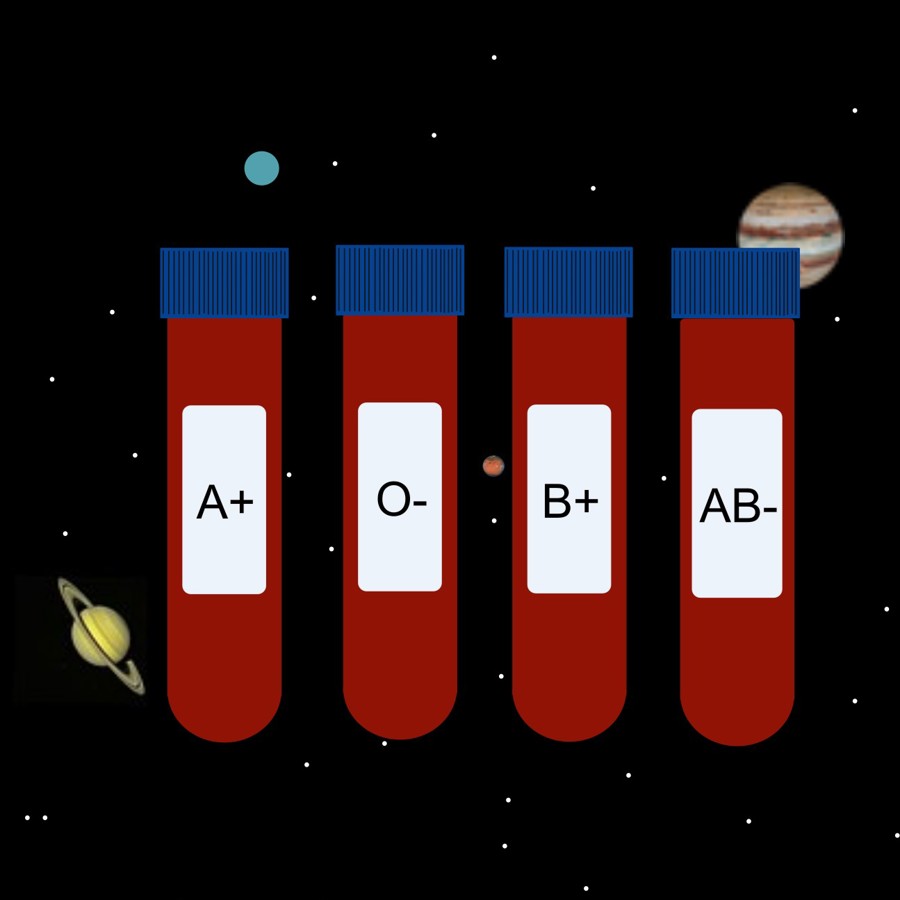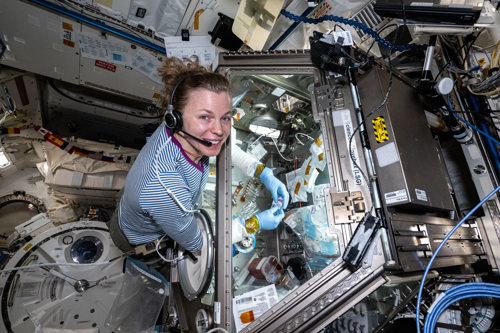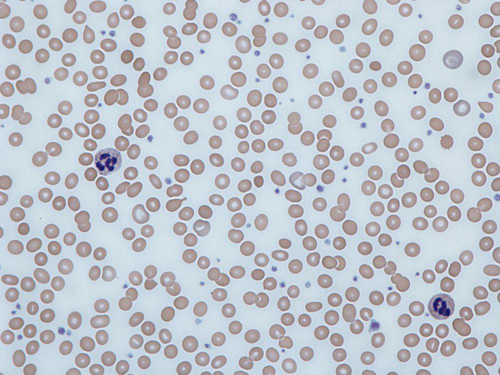
Does blood type matter in outer space?
October 7, 2025

- Related Topics:
- Blood type,
- ABO blood type,
- Rh factor
A curious space tech in Titusville, FL asks:
"Does blood type matter in outer space? Are astronauts chosen by their blood type? Which Rh blood type works best in outer space?"
Your body in space
It probably comes as no surprise that space travel does some strange stuff to the human body. At the very least, you might get a little “space sick” without Earth’s gravity, or experience motion sickness due to changes in your spatial orientation, head-eye/hand-eye coordination, and balance. On a Mars mission, for instance, which takes a NASA crew six months to complete, you’d be in just a third of Earth’s gravity!
On the more extreme end, bones can lose up to 1.5% of their density each month in space.1 This happens because in microgravity, your spine and hips have less weight to bear and therefore don’t need to be as mineral dense. As bones lose their mineral density, they release calcium into the bloodstream, which puts astronauts at risk of developing kidney stones. Bone loss can also make astronauts more likely to develop fractures and bone diseases, like early osteoporosis.

That’s not all microgravity does to the body!
Fun fact: Spines straighten out in space, so much so that astronauts’ heights can increase by 3%! (This means that if you were 5’ on Earth, you could be almost 5’2” in space!) Additionally, because body fluids are shifted up towards the head in space, astronauts may experience vision problems from increased pressure on the eyes.
Given all of this, you might think that astronauts need to meet certain physical requirements before embarking on a mission. You’d be right!
In addition to educational and other non-physical qualifications, astronauts must also have certain physical traits, like vision correctable to 20/20, blood pressure at or below 140/90, and a standing height between 62 and 75 inches. Does blood type fall under these physical criteria? The short answer is no, but read on to find out more about how blood type works and what happens to your blood in space!
What’s a blood type?
You’ve probably heard of the four main blood groups: A, B, AB, and O. Your blood group depends on the presence of particular antigens on the surface of your red blood cells. You can think of antigens as nametags that help the immune system respond to substances it doesn’t recognize (like bacteria and viruses). An antigen can be a sugar, a protein, or a lipid (fat).
Type A blood cells have the A antigen, Type B blood cells have the B antigen, Type AB blood cells have both A and B antigens, and Type O blood cells have neither A or B antigens. Additionally, blood types are either positive or negative, based on the presence (positive) or absence (negative) of another antigen called the Rh factor.

Someone with O- blood type is a universal donor, which means they can give blood to anyone with any blood type. Although a universal donor, O- can only receive blood from O-. In contrast, someone with AB+ blood type is a universal recipient, which means they can receive any blood type. There are also rare blood types that fall outside of these 8 categories, like the Bombay Blood group.
The fact that some blood types are rarer than others can matter a lot in the event of an emergency blood transfusion. It’d be a lot harder, for instance, to find a donor for someone with O- blood, which only 1 in 15 people in the United States have, or for Bombay Blood Group, which is estimated to only be present in 1 out of every 250,000 people.2
Your blood in space
So, does anything happen to your blood in space? The answer is yes -- but it has very little, if anything, to do with your blood type.
For a long time, we knew that astronauts experienced space anemia, a condition caused by a reduction of red blood cells. Since red blood cells deliver oxygen to all of the cells in the body, having too few of them can cause fatigue, weakness, and even impair cognitive and heart function. In 2022, a group of researchers found that red blood cells are destroyed at a much faster rate in space: 3 million red blood cells per second, compared to 2 million per second on Earth.3 Strikingly, the rate of red blood cell destruction remained elevated in astronauts even a year after they returned to Earth!
Is one blood type more resilient to anemia? While there is no strong link between blood type and anemia, one recent study in Turkey found that in a sample of 1,162 men, those with A- blood were at a higher risk of anemia.4 Without replicating this work across diverse populations, though, it is difficult to make strong claims about blood type and anemia.

Of course, there are other determinants of anemia beyond blood type. Some types of anemia, like sickle cell anemia, are inherited, while others types are related to nutrition, lifestyle, or other health conditions. The exact mechanisms of space anemia, and ways astronauts might reduce their risk of it, are still up for debate. For now, there is no blood type requirement for astronauts to enter space, but it’s possible that as we continue to learn about the impacts of space travel on the human body, the precautions astronauts take may change.

Author: Deniz Bingul
When this answer was published in 2025, Deniz was a Neurosciences PhD candidate, studying cognitive function in a mouse model of Parkinson’s disease. Deniz wrote this answer while participating in the Stanford at The Tech program.
 Skip Navigation
Skip Navigation
